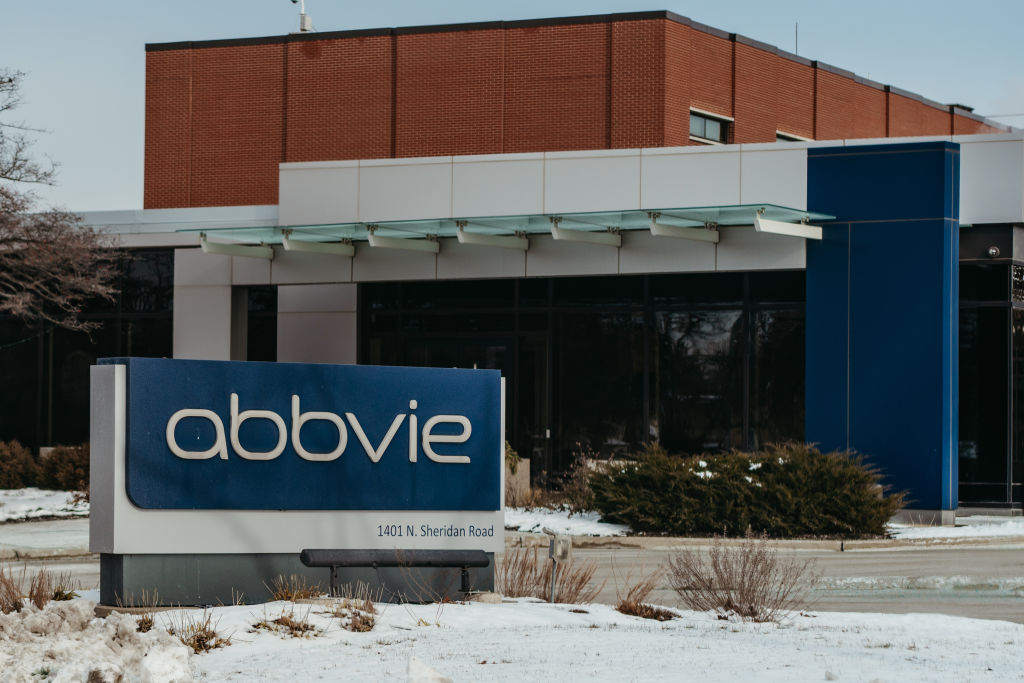Best Stocks to Buy for Fed Rate Cuts
Consider these stock and fund picks now that the Federal Reserve's rate-cutting campaign is underway.


Anne Kates Smith
The salad days for cash holders are wilting. Investors who've been happy to earn cash returns of 5%-plus with little risk now need a plan B after the Federal Reserve kicked off a rate-cutting cycle in September.
The central bank reduced its benchmark federal funds rate by half a percentage point and then followed this up with a quarter-point cut in November, bringing the range to 4.50% to 4.75%. Expect more cuts to come as the Fed strikes a balance between supporting the job market and keeping a lid on inflation.
Strategists at Wells Fargo Investment Institute see the fed funds rate dropping a total of one percentage point this year and note the Fed's expectations for four more rate cuts in 2025. So, they say, now is the time to deploy some of your cash hoard into intermediate-term bonds, which offer attractive yields, with more limited price risk than currently is the case for longer-term bonds. High-yield taxable bonds, especially during price pullbacks, could be another attractive target for excess cash, according to Wells Fargo.

Sign up for Kiplinger’s Free E-Newsletters
Profit and prosper with the best of expert advice on investing, taxes, retirement, personal finance and more - straight to your e-mail.
Profit and prosper with the best of expert advice - straight to your e-mail.
An intermediate-term fund we like is the Baird Aggregate Bond Fund (BAGSX), a fund holding investment-grade IOUs and recently yielding 3.7%. Or explore the Vanguard High-Yield Corporate Fund (VWEHX), yielding 5.8%. Both fixed-income funds are members of the Kiplinger 25, the list of our favorite actively managed no-load funds.
Stocks have a mixed record after Fed rate cuts
History shows that the stock market's reaction to Fed rate cuts over time is decidedly mixed. Since 1973, the S&P 500 Index has fallen an average of 0.5% in the three months following an initial rate cut. But the range is broad, from a drop of 24.5% in 1974 to a gain of 16.9% in 1998, according to a recent report from Morgan Stanley Research.
Much depends on the health of the economy at the time of the cut. Many on Wall Street are betting on a so-called soft landing, with the economy slowing but avoiding recession. All eyes will be on labor and other economic indicators in coming months to see whether that thesis plays out.
Given strong pre- and post-cut rallies in stocks, Philip Orlando, chief market strategist at financial firm Federated Hermes, thinks investor optimism may have overshot the mark for now. "We remain cautious on stocks for the near term, given the potential for a temporary 8%-to-12% correction in coming months," he says.
A good strategy for stock investors now might be to zero in on firms that can generally benefit from lower interest rates and are showing strength in their operations. The stocks below are worth exploring as the Federal Reserve keeps cutting interest rates.
AbbVie

- Sector: Healthcare
- Market value: $352.5 billion
- Dividend yield: 3.3%
You might not think a healthcare stock would be first in line for discussion on the best stocks to buy for rate cuts, but AbbVie (ABBV) is a great example of a company that can benefit from the cheaper borrowing costs that come from lower interest rates. That's because AbbVie has a strong and reliable cash flow of more than $22 billion annually along with a significant debt load of about $70 billion.
Generally speaking, companies with a financial footprint like AbbVie can borrow a bit more freely (and cost-effectively) when rates dip. This can include issuing new corporate bonds, as well as restructuring existing debt for a more favorable payment schedule. As a research-driven pharmaceutical company, ABBV needs cash readily available so that it can finance the potential treatments in its product pipeline; lower rates allow it the financial headroom it needs to do so.
And if rates don't budge for a bit? No sweat. AbbVie is one of the top five pharmaceutical companies by revenue, so it's not going anywhere. What's more, it's one of the best dividend stocks for dependable dividend growth and offers a generous 3.3% yield.
Constellation Energy

- Sector: Utilities
- Market value: $74.9 billion
- Dividend yield: 0.6%
A very different business but perhaps one that's even more capital-intensive is Constellation Energy (CEG), a utility stock that's focused on generating renewable energy. The company operates about 33,000 megawatts of generating capacity consisting of nuclear, wind, solar, natural gas and hydroelectric assets – as you can imagine, building more of those dams, solar arrays and wind farms isn't cheap. Lower-cost financing will mean an easier path to growth for CEG.
It's also worth noting that the current elevated interest-rate environment hasn't held Constellation back. Shares have nearly doubled in the past 12 months on a total return basis (price change plus dividends) – an amazing feat for a stock that's in a typically sleepy sector of Wall Street.
And high-energy applications like artificial intelligence (AI) and crypto mining are driving up demand for utility companies. Plus, the renewables focus of CEG positions it well in an age of climate change, it's easy to see why investors are optimistic about this stock.
That success has happened even as the Fed held interest rates at their highest levels in roughly two decades, so a decline in key borrowing rates could help spark a continued rally in shares.
Ford Motor

- Sector: Consumer discretionary
- Market value: $43.6 billion
- Dividend yield: 5.5%
Ford Motor (F) was one of several automakers that scaled back production of its much-anticipated electric vehicle (EV) fleet over the last year. This was because the current economics of EVs is a bit more challenging than executives had hoped. For instance, higher borrowing costs are causing headaches for car buyers as well as for carmakers who need to retool factories to accommodate the shift.
But make no mistake, the future of cars is electrified – and, as evidenced by Ford's Lightning F-150 and its all-electric Mustang Mach-E, the company is steadily moving in that direction. It just needs a bit more incentive to pick up the pace and a downshift in interest rates may help it do exactly that.
With more than $100 billion in long-term debt, interest rates matter as much as the product mix to an automaker like Ford.
Verizon Communications

- Sector: Communication services
- Market value: $170.4 billion
- Dividend yield: 6.7%
Verizon Communications (VZ) has an even bigger debt load than Ford – roughly $173 billion, according to Morningstar. As such, the telecom giant is another example of a large company with stable cash flows and a strong balance sheet that would benefit from cheaper debt financing under lower interest rates.
Operating the largest wireless network in the U.S. with about 115 million subscribers is not a cheap business model. Furthermore, even as Verizon is investing in upgrading and maintaining its wireless network, the company is spending aggressively on fiber optic connectivity for homes and businesses with more than 57,000 fiber miles deployed since 2020.
VZ is the bluest of blue chip stocks, with a massive market cap and a generous 6.7% dividend, so it's not going anywhere. But lower interest rates may help it maintain an edge going forward.
Welltower

- Sector: Real estate
- Market value: $86.18 billion
- Dividend yield: 1.9%
Senior housing specialist Welltower (WELL) is one of many real estate stocks that will benefit from rate cuts. This is because lower interest rates will reduce the borrowing costs for those looking to buy new land or build new facilities. Unlike some of the riskier plays in real estate, however, WELL stock is doing quite well, even under a regime of higher rates.
Specifically, occupancy at its properties is improving while cost pressures are declining. In a recent business update to investors, Welltower increased its dividend payout 10%, and it now boasts a healthy 2.1% yield. What's more WELL also raised guidance for its funds from operations, a key measure of financial health for real estate investment trusts (REITs).
It's hard to bet against the persistent demographic trend of aging Americans, so there's a clear long-term case to be made for Welltower. And with shares up 565% in the last 12 months on a total return basis – easily outperforming the S&P 500 – and the prospect of lower rates potentially boosting performance in the months ahead, there are clearly reasons to consider this as one of the top stocks to buy for Fed rate cuts.
Note: A portion of this item first appeared in Kiplinger Personal Finance Magazine, a monthly, trustworthy source of advice and guidance. Subscribe to help you make more money and keep more of the money you make here.
Related content
Get Kiplinger Today newsletter — free
Profit and prosper with the best of Kiplinger's advice on investing, taxes, retirement, personal finance and much more. Delivered daily. Enter your email in the box and click Sign Me Up.

Jeff Reeves writes about equity markets and exchange-traded funds for Kiplinger. A veteran journalist with extensive capital markets experience, Jeff has written about Wall Street and investing since 2008. His work has appeared in numerous respected finance outlets, including CNBC, the Fox Business Network, the Wall Street Journal digital network, USA Today and CNN Money.
- Anne Kates SmithExecutive Editor, Kiplinger Personal Finance
-
 Can Trump Fire Powell? A Supreme Court Case Could Decide
Can Trump Fire Powell? A Supreme Court Case Could DecidePresidential posts threaten to overwhelm decades of precedent and tradition, whatever the nine justices decide.
By David Dittman
-
 Do You Need an AI Agent in Your Life?
Do You Need an AI Agent in Your Life?AI agents promise to be the next big thing in artificial intelligence, but what exactly do they do?
By Tom Taulli
-
 Can Trump Fire Powell? A Supreme Court Case Could Decide
Can Trump Fire Powell? A Supreme Court Case Could DecidePresidential posts threaten to overwhelm decades of precedent and tradition, whatever the nine justices decide.
By David Dittman
-
 What Are AI Agents and What Can They Do for You?
What Are AI Agents and What Can They Do for You?AI agents promise to be the next big thing in artificial intelligence, but what exactly do they do?
By Tom Taulli
-
 Should You Buy an iPhone Now Before Tariffs Hit?
Should You Buy an iPhone Now Before Tariffs Hit?Looming tariffs can make an iPhone purchase seem urgent. Here's what to do if you need another phone but want to save money.
By Laura Gariepy
-
 SRI Redefined: Going Beyond Socially Responsible Investing
SRI Redefined: Going Beyond Socially Responsible InvestingNow that climate change has progressed to a changed climate, sustainable investing needs to evolve to address new demands of resilience and innovation.
By Peter Krull, CSRIC®
-
 Here's When a Lack of Credit Card Debt Can Cause You Problems
Here's When a Lack of Credit Card Debt Can Cause You ProblemsUsually, getting a new credit card can be difficult if you have too much card debt, but this bank customer ran into an issue because he had no debt at all.
By H. Dennis Beaver, Esq.
-
 33 Stocks That Could Rally 50% or More This Year
33 Stocks That Could Rally 50% or More This YearAnalysts say these S&P 500 stocks have at least 50% price upside over the next year or so.
By Dan Burrows
-
 Stock Market Today: Dow Drops 971 Points as Powell Pressure Ramps Up
Stock Market Today: Dow Drops 971 Points as Powell Pressure Ramps UpPresident Trump is increasing his attacks against Jerome Powell, insisting the Fed chair cut interest rates.
By Karee Venema
-
 When Should You Hand Over the Keys — to Your Investments?
When Should You Hand Over the Keys — to Your Investments?The secret to retirement planning? "The best time to hand over the keys is before you’ve realized you need to hand over the keys."
By Maurie Backman